INTRODUCTION
Leprosy is an infectious disease derived from the French work "leper" and from the Greek word "lepros" which means scaly, referring to the scales that form on the skin in some cases of leprosy and that has been known since biblical times. Leprosy is characterized by disfiguring skin sores, nerve damage, and progressive debilitation.

YOGA AND LEPROSY
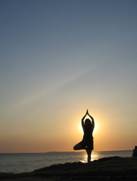
YOGA POSES FOR LEPROSY
Sun Salutation
Yoga sun salutation (Surya namaskara) is a combination of 12 poses in a sequence beginning and ending in stand-at-ease pose, the 5th and 6th of them being standing on four limbs with body horizontal to the ground while forehead and nose touches ground. The sequential breathing series during the Sun Salutation prepares respiratory mechanism for the asthma combats.
Child Pose
This is one of the effective yoga postures to reduce stress and anxiety. Proceed from shvana asana. With knees spread fully on the floor bend forward so much as to touch your belly to thighs and forehead to ground. Keep the hands fully stretched in front of you.
Plough pose
A lot people complain about stiffness on the neck and lower back as a result of stress and wrong posture. In the Plough Pose, you stretch the neck and the lower back muscles. At the same time you achieve a new structure in your back. Performing the Yoga Plough pose requires you to harmoniously use the flexibility and muscle tone developed with other yoga poses, such as the shoulder stand. Practice will allow you to go in and out of this pose with ease and grace.
Reclining twist pose
The reclining twist is a useful yoga pose that can alleviate lower back pain and relax your hips and neck. You can assume this pose to stretch and relax between other poses, or at the beginning or end of your yoga session. The reclining spinal twist pose in yoga works to release tension held deep within the hip joints, stretches the hamstrings and both massages and tones the muscles and organs of the abdomen. Using only the weight of your own body, the reclining twist uses virtually no muscular energy and is a great ending pose for the cool down of your yoga routine.
YOGA ASANAS FOR LEPROSY
GOMUKHASANA
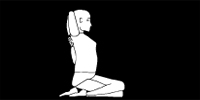
Gomukhasana or the Cow-face Pose derives its name from Sanskrit where go means cow and mukha means face. The word go also means light thus gomukh refers the light in or of the head or lightness of the head.Gomukhasana helps in relieving pain in hip and lower extremeties. It helps to make the spine straight and improves body posture. It also helps in purifying the blood.
Steps
• Sit in a crossed-leg position, right leg over left.
• Spread the legs as far apart as possible without bending the knees.
• Bend the left knee and place the bottom of the left foot against the inner left thigh. Bring the left heel as close to the perineum as possible. Keep the left knee on the floor..
• Grasp the right foot with the left hand and keeping the foot on the floor place the heel of the right foot against the front-left portion of the left buttock. The right knee should be directly on top of the left knee.
• Inhale slowly through the nostrils and raise the right hand over the head and bend the right elbow. Reach behind the back with the left hand and clasp the fingers of both hands (forming an "s" shaped lock).
• Hold the posture as long as you can comfortably hold the inhale breath. Exhale slowly and then repeat the posture reversing the arms and legs.
SIDDHASANA
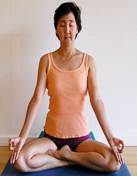
Siddhasana is one of the most popular meditation postures. Siddha in Sanskrit refers to those hidden powers within the body that help individual to attain spiritual upliftment. This asana is also known as "Perfect Pose," because one attains perfection in Yoga by meditating in this position. Siddhasana is useful to learn, since it is used as the practice seat for some of the pranayamas and the mudras.
Steps
• Sit on the floor, with legs stretched straight in front. Bend the left leg, hold the left heel, and place it near the perineum. The sole of the left foot should be placed against the right thigh.
• Now bend the right leg and place the right foot on the left ankle. The heel of the right foot should be placed at the root of the genitals.
• Place the back of the hands on the knees so that the palms face upward
• Join the tip of the thumb and the index finger of each hand. Keep the spine straight and erect. Let the head, the neck and the spine be erect and in the straight line.
• Look downwards. Bend the neck low so that the chin touches the lower part of the throat.
VEERASANA
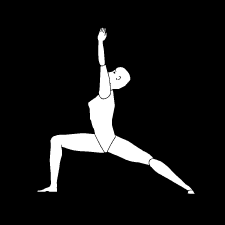
The veerasana is one of the basic Seated Postures, also excellent for Meditation. The internal rotation of the upper legs and knees is opposite to the movement involved in the Lotus Pose; as such, it both loosens the hips, knees, and ankles in preparation for the Lotus Pose and acts as a mild counterpose.This Pose is also the starting Yoga position for several forward bends, backward bends, and twists.
Steps
• Start with your hands and knees on the floor as in the Cat Pose. Have your knees hip-width apart so the thighs are parallel with one another, and separate your feet until they are slightly wider than your hips. Check that your feet are pointing directly backward, not turning in or out.
• Sit between your feet by first supporting yourself with your hands and then slowly lowering your hips to the floor. If you are unable to sit comfortably, or if you feel any pain in your knees, elevate your hips by placing a folded blanket. Eventually, you will be able to sit between your feet with no discomfort with your buttocks firmly on the ground.
• Sit tall. Counteract the tendency to slump by adjusting the buttock muscles sideways and back with your hands, and tilting the pelvis slightly forward so you are positioned on the frontal edge of each sitting bone. Then draw the abdomen backward toward the spine and delicately adjust your hips toward cat tilt to establish neutral alignment of your center, your pelvis making a ninety-degree angle with the thighs. You are now on the tips of the sitting bones.
• Rest your hands in your lap, on your thighs, or on your ankles, and then close your eyes. Elevate and free your chest, relax the shoulders back and down away from your ears, then lift or lower your chin until your head feels perfectly balanced, weightless on top of the spine. Sit quietly for at least a minute.
ARDHAMATSYENDRASANA
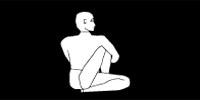
It is highly recommended for treatment of obesity, dyspepsia, diabetes and urinary disorders. One should not do this asana forcibly. The important physiological aspects of this posture (asana) are that it stimulates the pancreas, liver, spleen, kidneys, stomach and ascending and descending colons. The back muscles are pulled and stretched in a different direction than usual and this relieves them of tension.
Steps
• Sit on the ground, stretching both the legs forward. Bend your right leg and place the heel under the left hip.
• Now bend your left leg, cross it over and place your foot by the side of the right knee. Try to hold the left ankle by passing the right arm over the left side of the left knee. At the same time, exhale and take the left arm behind the back and press the right side under the ribs.
• Place the back of the hands on the knees so that the palms face upward.
• This has to be done by twisting the trunk to the back as much as possible. Maintain this posture for a few seconds and increase the duration to two minutes gradually.
• Repeat the same process on the other side for the same duration.
ASTROLOGY
Yoga is the primary level which consists of bodily exercises to build a ground for Meditation. The word yoga had been derived from the Sanskrit word yuj which means to join to unite to balance or to integrate. Yoga is a system of exercises for the mental and physical well being. It combines stylized poses with deep meditation and breathing. In the broadest sense Yoga thus means integration at three levels Body, Mind and soul. According to astrological reports for yoga asanas the above mentioned asanas are said to be effective for those who come under the following zodiac sign.